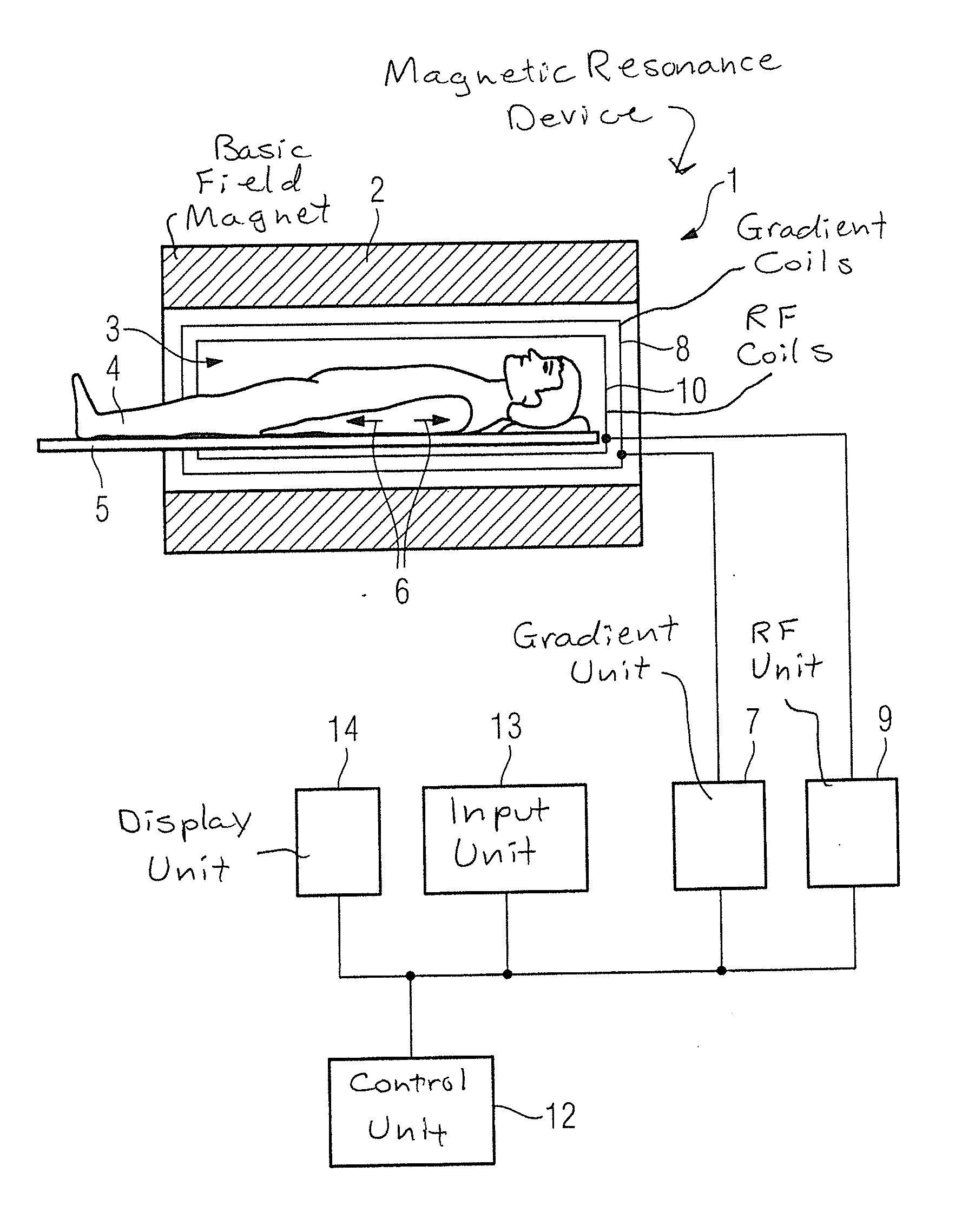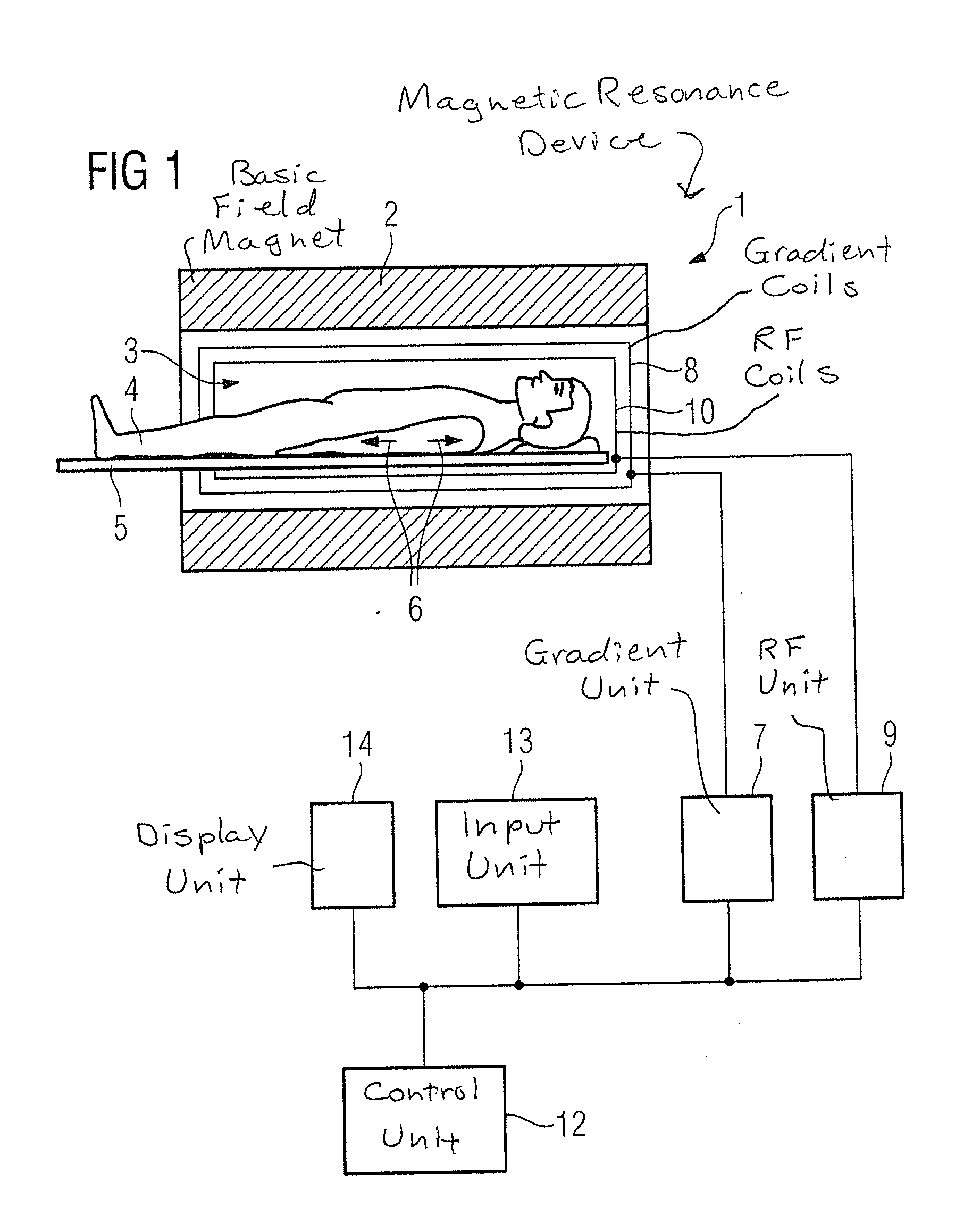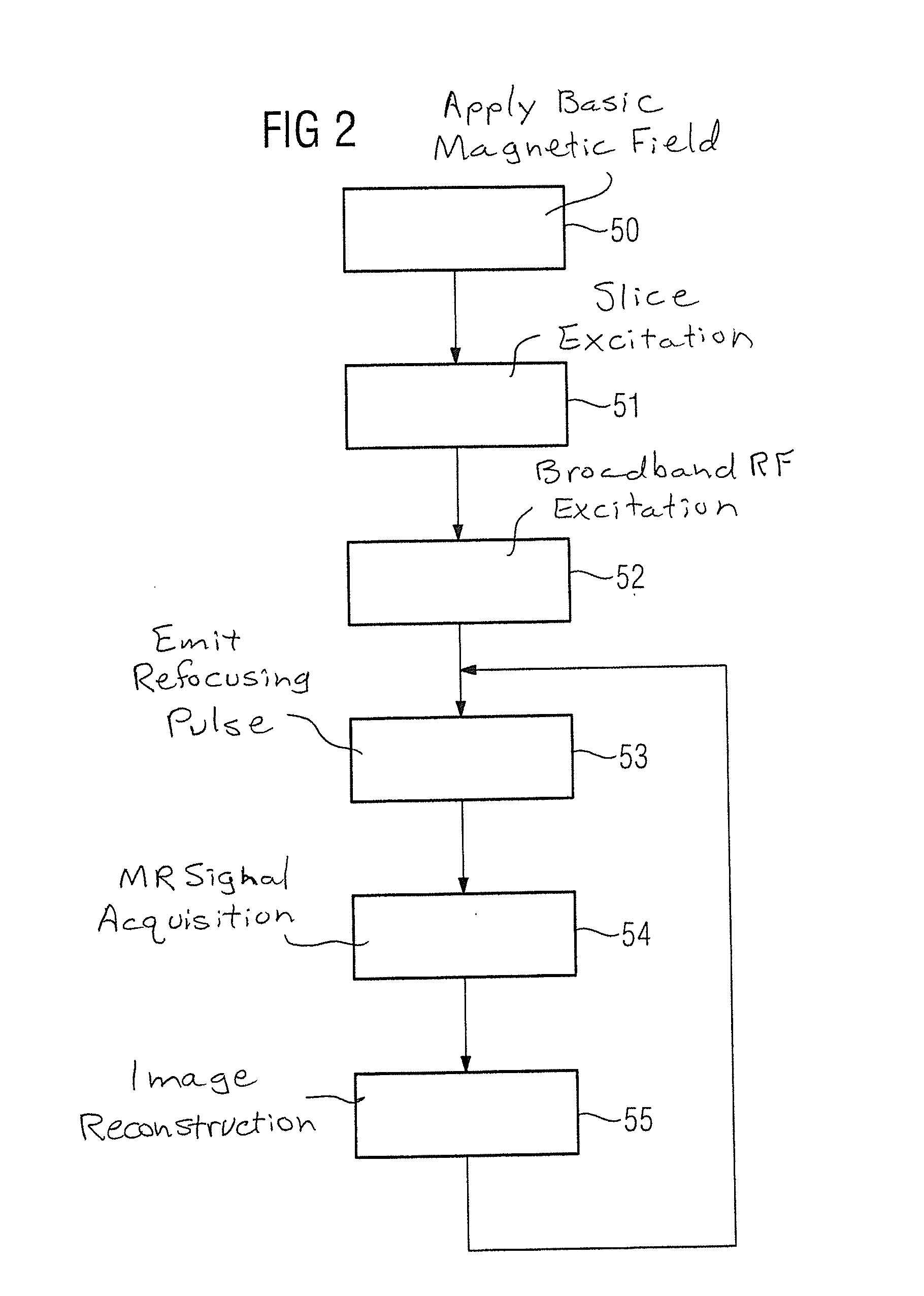Method and magnetic resonance device for imaging of particles
a magnetic resonance device and particle technology, applied in the field of particle imaging, can solve the problems of hypointense image regions, signal loss, susceptibility artifacts, etc., and achieve the effect of large contrast range and favorable detection of particl
- Summary
- Abstract
- Description
- Claims
- Application Information
AI Technical Summary
Benefits of technology
Problems solved by technology
Method used
Image
Examples
Embodiment Construction
[0026]A method and a magnetic resonance device 1 to image magnetically active particles that generate an interference field (for example a dipole field) in an applied basic magnetic field B0 are explained in more detail using the embodiments of the present invention that are explained in the following. The particles are formed by magnetically active particles that are or include iron oxide.
[0027]The magnetic resonance device 1 according to the invention is schematically depicted in FIG. 1. The magnetic resonance device 1 has a basic field magnet 2 that generates the basic magnetic field B0. The magnetic resonance device 1 additionally has a cylindrical acquisition region 3 to accommodate a patient 4, which acquisition region 3 is surrounded by a magnet 2 in a circumferential direction of the acquisition region 3. An examination subject (here a patient 4) can be shifted into the acquisition region 3 along a feed direction 6 (as this is indicated by arrows in FIG. 1) by means of a pat...
PUM
 Login to View More
Login to View More Abstract
Description
Claims
Application Information
 Login to View More
Login to View More - R&D
- Intellectual Property
- Life Sciences
- Materials
- Tech Scout
- Unparalleled Data Quality
- Higher Quality Content
- 60% Fewer Hallucinations
Browse by: Latest US Patents, China's latest patents, Technical Efficacy Thesaurus, Application Domain, Technology Topic, Popular Technical Reports.
© 2025 PatSnap. All rights reserved.Legal|Privacy policy|Modern Slavery Act Transparency Statement|Sitemap|About US| Contact US: help@patsnap.com



